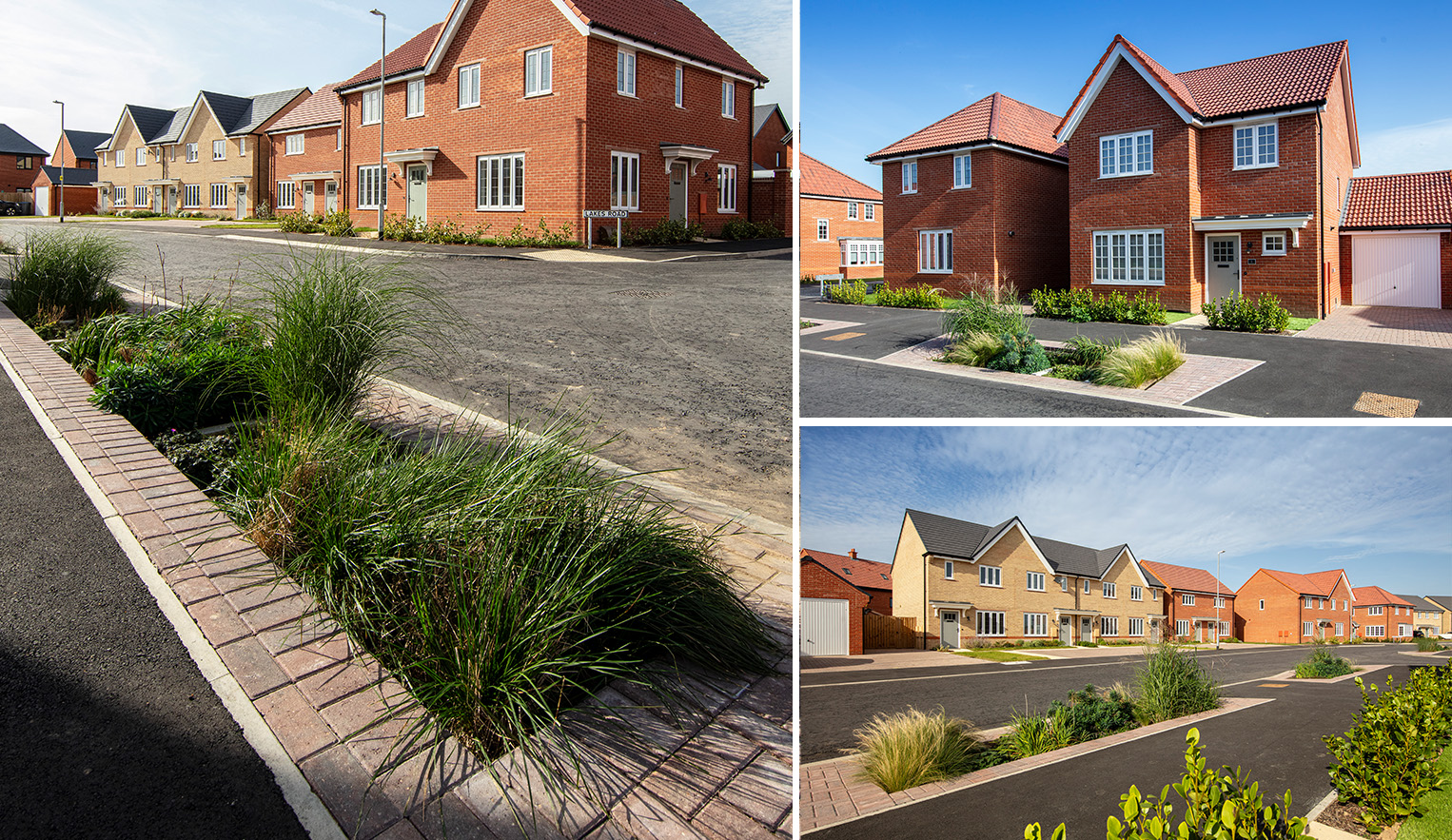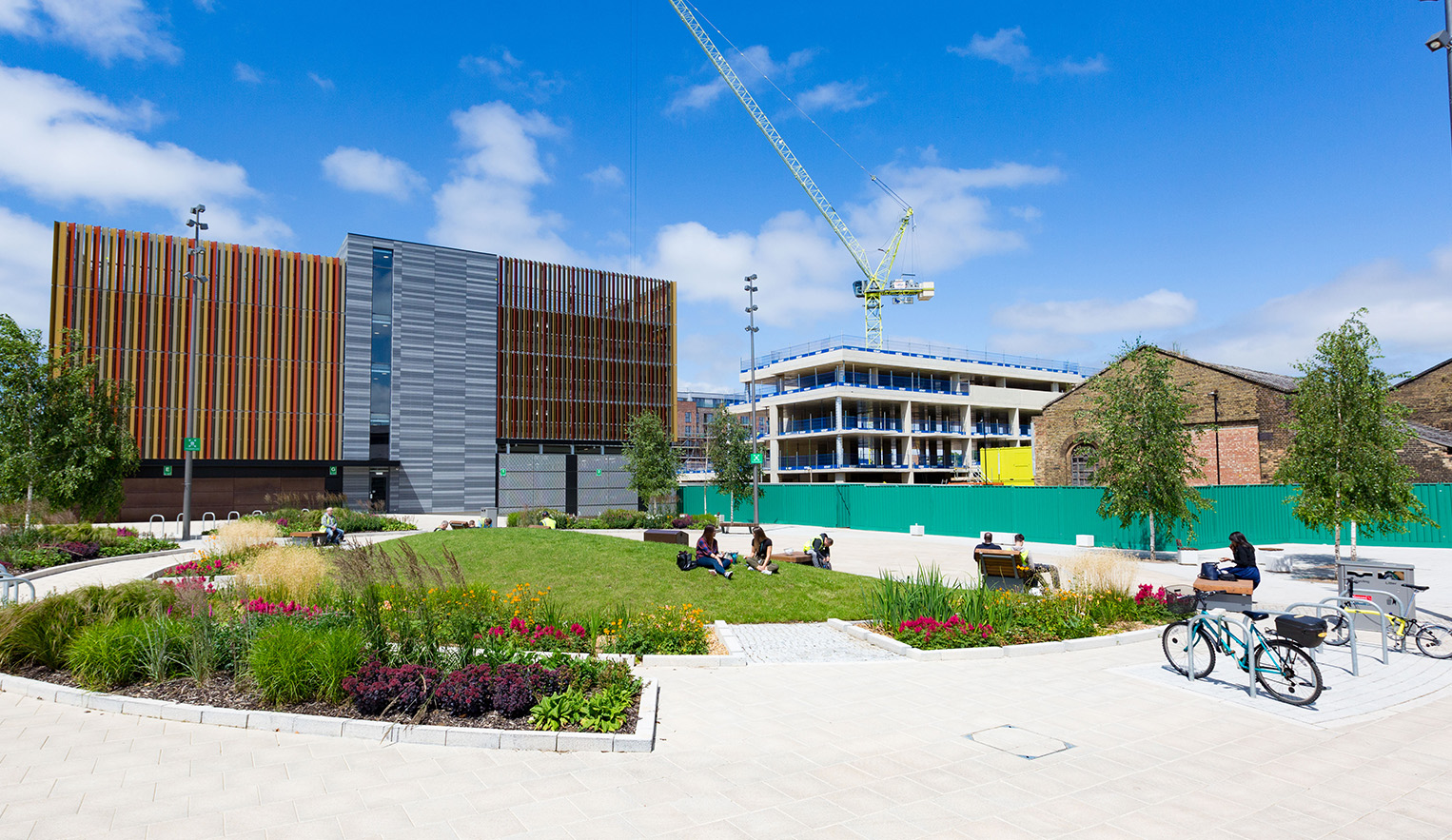It’s not easy; the land is in short supply, as they’re not making it anymore. Land designated for development is in even more short supply – local authorities are not allowing development on land in many areas, which could alleviate the pressures in the building process. But why should they? Much of our green and pleasant land is either a Green Belt, an Area of Outstanding Beauty or just countryside. Indeed, no one wants wall-to-wall development across our fields, but local authorities are under pressure to meet housing targets conferred on them by the central government.
So, what do we do?
People need and want homes to live in. People need places to work. How do we balance the needs of the population with the requirements of nature and our need as humans to have access to green space? The density of a newly built development often precludes extensive landscape features, so we need to find a way to include small but highly diverse planted areas to give us enough biodiversity to hit the targets. Features such as the HydroPlanter and the modular rain garden provide small-scale SuDS and, if planted well, offer great biodiversity. In some new developments, HydroPlanters are being installed at the property level – what we call MicroSuds.

GreenBlue Urban believes that the answer is landscape-led development—development that incorporates all the elements that we, as human beings, need to thrive on an increasingly urbanised planet. Many local authorities are now viewing the landscape as critical infrastructure—to be considered as part of the initial planning application rather than being left to reserved matters later in the process. This is a forward move as it helps ensure that space and funding are allocated early, making it far more likely to be implemented.
The project at Fletton Quays in Peterborough where we worked with the landscape architects, drainage engineers, Peterborough City Council, the developer and the contractors is a great example of collaboration to deliver a Sustainable Drainage landscape scene that is both functional, attractive and saved the developer over £700,000 in drainage costs. Tree planting and rain gardens equipped with RootSpace soil cells and bio-retention soil have been established well and work effectively.

Mandatory BNG and the Environment Act
The new legislation regarding Biodiversity Net Gain – where new developments are required to show that they have increased biodiversity by a minimum of 10% has helped focus attention on planning for long-term biodiversity. While it is a pretty blunt tool at the moment, with some potentially very biodiverse features not given the weighting we think they deserve, it will doubtless result in an improvement in the quality of the landscape. The emphasis on hedgerows and habitat creation does allow a wide range of insect and mammal life, and the resulting food chain increases.

We have seen Wales embrace Schedule 3 of the Flood and Water Management Act, which has been revolutionary in introducing the inclusion of Sustainable Drainage Systems (SuDS) on all developments with more than one property or over 100m² in plan area. We are undoubtedly excited about the same in England, with GreenBlue Urban fully aware that a collaborative approach is required to deliver successfully.

In conclusion, it is possible and cost-effective to combine green and blue infrastructure while gaining additional biodiversity and saving money on drainage. GreenBlue Urban is happy to help with your project designs, as we all seek to improve the quality of life by creating outdoor spaces in harmony with nature.

